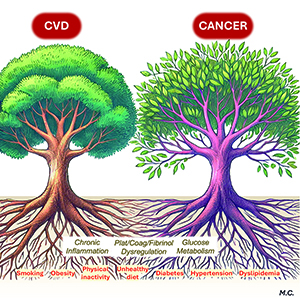From rare to aware: confronting Lemierre syndrome

Submitted: 9 July 2024
Accepted: 1 October 2024
Published: 21 October 2024
Accepted: 1 October 2024
Abstract Views: 1648
PDF: 330
Publisher's note
All claims expressed in this article are solely those of the authors and do not necessarily represent those of their affiliated organizations, or those of the publisher, the editors and the reviewers. Any product that may be evaluated in this article or claim that may be made by its manufacturer is not guaranteed or endorsed by the publisher.
All claims expressed in this article are solely those of the authors and do not necessarily represent those of their affiliated organizations, or those of the publisher, the editors and the reviewers. Any product that may be evaluated in this article or claim that may be made by its manufacturer is not guaranteed or endorsed by the publisher.
Most read articles by the same author(s)
- Fabio Tumminello, Silvia Cardi, Corrado Lodigiani, Maria Elisa Mancuso, Antithrombotic therapy in idiopathic infertility , Bleeding, Thrombosis and Vascular Biology: Vol. 3 No. 3 (2024)
Similar Articles
- Marcello Di Nisio, Matteo Candeloro, Nicola Potere, Ettore Porreca, Jeffrey I. Weitz, Factor XI inhibitors: a new option for the prevention and treatment of cancer-associated thrombosis , Bleeding, Thrombosis and Vascular Biology: Vol. 3 No. s1 (2024): 12th ICTHIC
- Sarah Gallitto, Thomas C. Varkey, Jacob Lahti, Venous thromboembolism prophylaxis in orthopedic surgery: a narrative review , Bleeding, Thrombosis and Vascular Biology: Vol. 3 No. 3 (2024)
- Paolo Simioni, Vittorio Pengo, Paolo Prandoni, Thrombosis and hemostasis at the University of Padua: a reappraisal on the occasion of its 800th year of history , Bleeding, Thrombosis and Vascular Biology: Vol. 1 No. 3 (2022)
- Rosina Albisinni, Tommaso Marrazzo, Arta Karruli, Sabrina Manduca, Giuseppe Nobile, Nicola Galdieri, Marisa De Feo, Successful treatment of aortic arch mural thrombosis with low-dose, ultra-slow-flow thrombolysis: a case report and literature review , Bleeding, Thrombosis and Vascular Biology: Vol. 1 No. 3 (2022)
- Daniela Poli, Walter Ageno, Emilia Antonucci, Salvatore Bradamante, Eugenio Bucherini, Paolo Chiarugi, Antonio Chistolini, Benilde Cosmi, Anna Falanga, Antonio Insana, Domenico Lione, Rosa Maria Lombardi, Giuseppe Malcangi, Rossella Marcucci, Giuliana Martini, Lucilla Masciocco, Carmelo Paparo, Daniele Pastori, Simona Pedrini, Vittorio Pengo, Pasquale Pignatelli, Andrea Toma, Sophie Testa, Gualtiero Palareti, Management of anticoagulation in atrial fibrillation patients in Italy: insight from the Atrial Fibrillation-Survey on Anticoagulated Patients Register (AF-START) , Bleeding, Thrombosis and Vascular Biology: Vol. 2 No. 2 (2023)
- Gisoo Imani, Aaron Wilson, Sara Vazquez, Daniel M. Witt, Pathways for lower extremity superficial vein thrombosis management in an academic medical center , Bleeding, Thrombosis and Vascular Biology: Vol. 4 No. 1 (2025)
- Marco P. Donadini, Walter Ageno, Milvexian and other drugs targeting Factor XI: a new era of anticoagulation? , Bleeding, Thrombosis and Vascular Biology: Vol. 1 No. 1 (2022)
- Ang Li, Emily Zhou, Trends and updates on the epidemiology of cancer-associated thrombosis: a systematic review , Bleeding, Thrombosis and Vascular Biology: Vol. 3 No. s1 (2024): 12th ICTHIC
- Rushad Patell, Jeffrey I. Zwicker, Rohan Singh, Simon Mantha, Machine learning in cancer-associated thrombosis: hype or hope in untangling the clot , Bleeding, Thrombosis and Vascular Biology: Vol. 3 No. s1 (2024): 12th ICTHIC
- Setor K. Kunutsor, Sudhir Kurl, Ari Voutilainen, Jari Laukkanen, Circulating albumin-to-fibrinogen ratio may be a risk indicator for venous thromboembolism: findings from a population-based prospective cohort study , Bleeding, Thrombosis and Vascular Biology: Vol. 1 No. 2 (2022)
You may also start an advanced similarity search for this article.

 https://doi.org/10.4081/btvb.2024.147
https://doi.org/10.4081/btvb.2024.147










